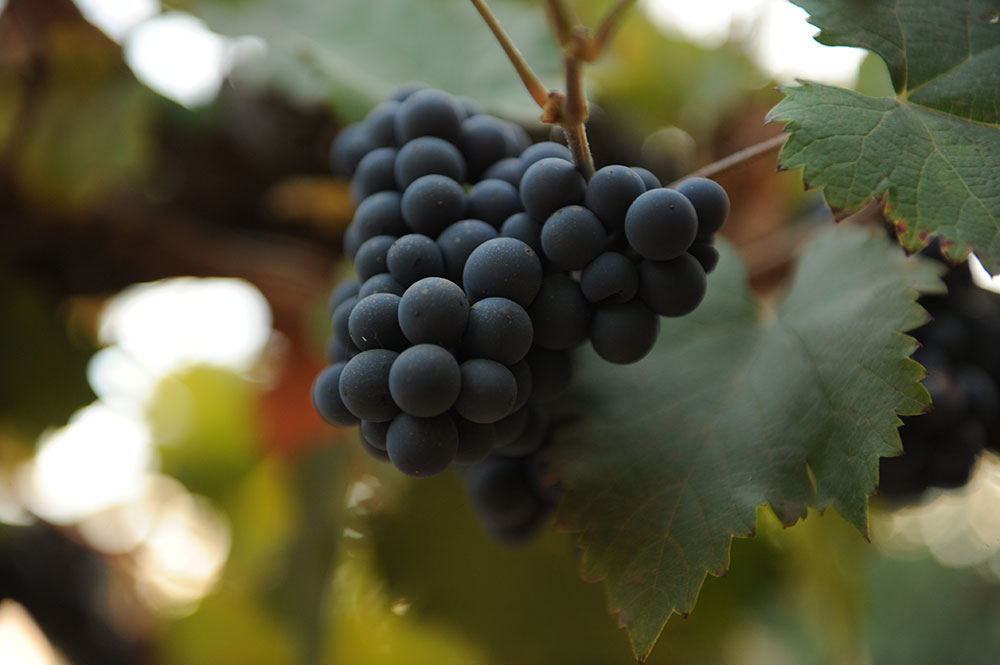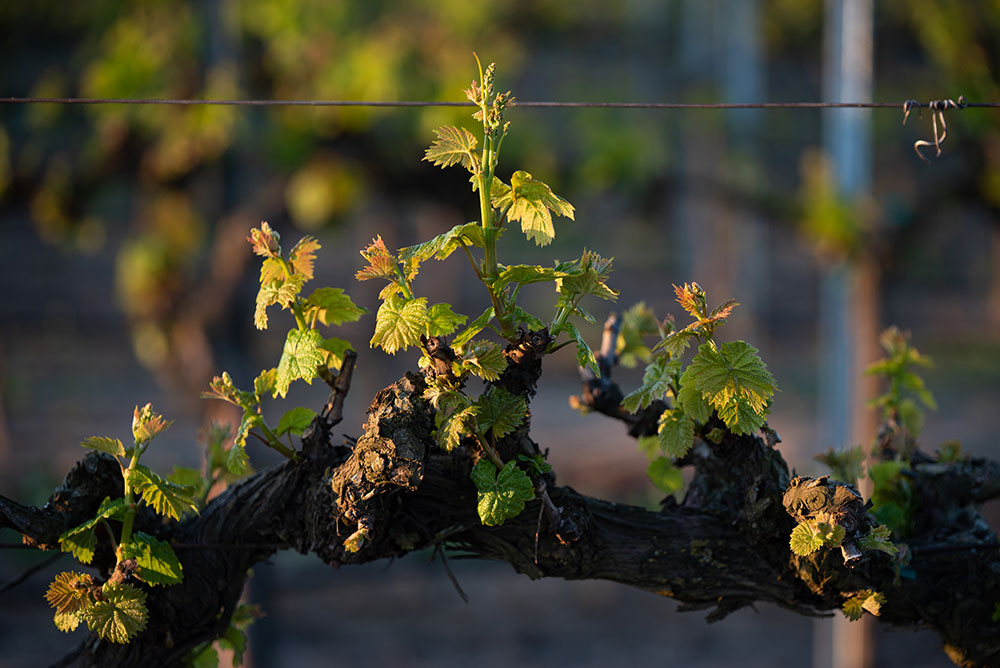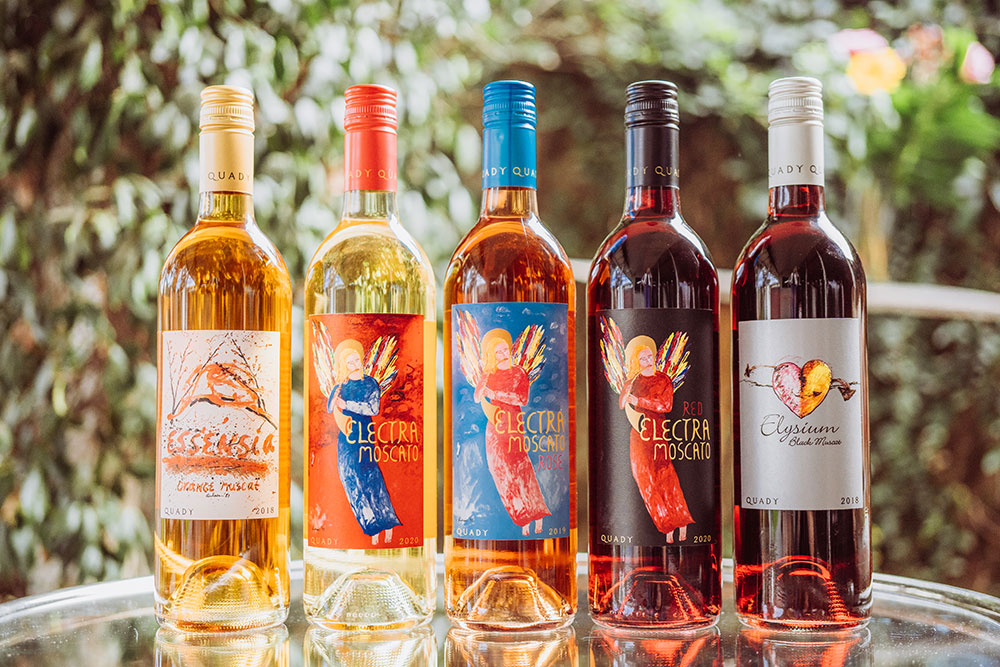What Kind of Wine is Moscato?
If you’ve been out shopping for wine lately, chances are, you’ve come across the Moscato section. This sweet wine is gaining in popularity! But if you’ve never heard of it or tried it, you might be wondering, “just what kind of wine is Moscato”?
The short answer is that Moscato is a low alcohol, sweet, medium to low-acidity wine containing fresh fruit flavors and pronounced floral aromas. It is made from Muscat grapes – often Muscat Canelli or Muscat of Alexandria – which have high residual sugar and low acid, contributing to Moscato’s sweet taste.
While “Moscato” (Italian) and “Muscat” (French) are often used to describe different styles of Muscat varietal wines in the U.S., the terms are equivalent around the world. In the U.S., we think of Moscato as being light and lower in alcohol; this is likely due to the popularity of the light, frizzante (lightly sparkling) style Moscato d’Asti wine from the Piedmont region of Italy. Quady Electra Moscatos are made in this same lower alcohol, frizzante style.

Is Moscato a newer style of wine?
Moscato is NOT a new style of wine. In fact, ancestors of Muscat grapes are believed to be some of the oldest in history, dating back to the ancient Egyptians and Persians of early antiquity (c. 3000-1000 BC). While domestic wine production had an extensive history in ancient Egypt and Persia, and Muscat-like varieties were described in writings, there is no solid historical evidence that supports these early wine varietals actually belonged to the Muscat family. However, the first documentation that mentions wine made from Muscat grapes is from the works of English Franciscan scholar Bartholomeus Anglicus in his De proprietatibus rerum written between 1230 and 1240. So we know that Muscat wines have been made and consumed since at least the 1200s, if not earlier!
Where does Moscato come from?
The exact origins of Muscat grapes is unknown, but some theories point to the Egyptians and Persians as mentioned previously, while others believe Muscat was propagated by the Greeks and Romans in the period of classical antiquity (c. 800 BC to 600 AD). The early Muscat varietals were chosen because of their incredibly fragrant aromas; you could smell them just by pressing them. Because it is a productive and resilient varietal with an ability to ripen to high sugars, Muscat was propagated across the Mediterranean by early travelers. The grapes were eaten or dried on straw mats and fermented into strong, honeyed wines, transported to other lands by sea because they wouldn’t spoil on the voyage over.

As time passed, Muscat grapes were traded and transported across the globe, named after the ports they were traded from and the islands they departed, such as Lemnos, Samos, Málaga and Alexandria. In Algeria, one of the names used for Muscat was “fandouk,” which means trading post, and in Sicily, the local name for Muscat of Alexandria is “zibbibo,” which is derived from the Arabic for raisin. Today there are more than 200 varieties of Muscat grapes grown all over the world, in shades ranging from white and orange to red, pink and black.
The exact origin of the name “Muscat” is unknown, but the most common school of thought is that the name is likely derived from the Persian word “muchk,” which means musk or perfume. Similar are Greek “moskos,” Latin “muscus,” and French “musc.”

Muscat vines can still grow and produce grapes at a century old, sometimes longer – even two and three centuries old. They give us a glimpse into the past, of what our ancestors found desirable: fragrance, sweetness, what would keep and not spoil. Today, we still choose Muscat grapes and wines for their enticing aromas of orange blossom, jasmine, honeysuckle or daffodils, their lush fruit flavors and their sweetness.
Although there are more than 200 distinct members of the Muscat family, only a handful are used to produce wine. The most commonly used Muscat varietals in winemaking are Muscat Blanc à Petits Grains (Muscat Canelli), Muscat of Alexandria, Muscat of Hamburg (Black Muscat) and Muscat Ottonel. At Quady Winery, we use blends of Orange Muscat, Black Muscat and Muscat Canelli to make our wines, because we prefer their distinctive flavors and aromas.

Now that you know a little bit more about Moscato, are you eager to try it? We’d love to hear your thoughts on our Electra Moscatos and our Muscat dessert wines! Let us know in the comments or tag us on social @quadywinery and share the Moscato love!

